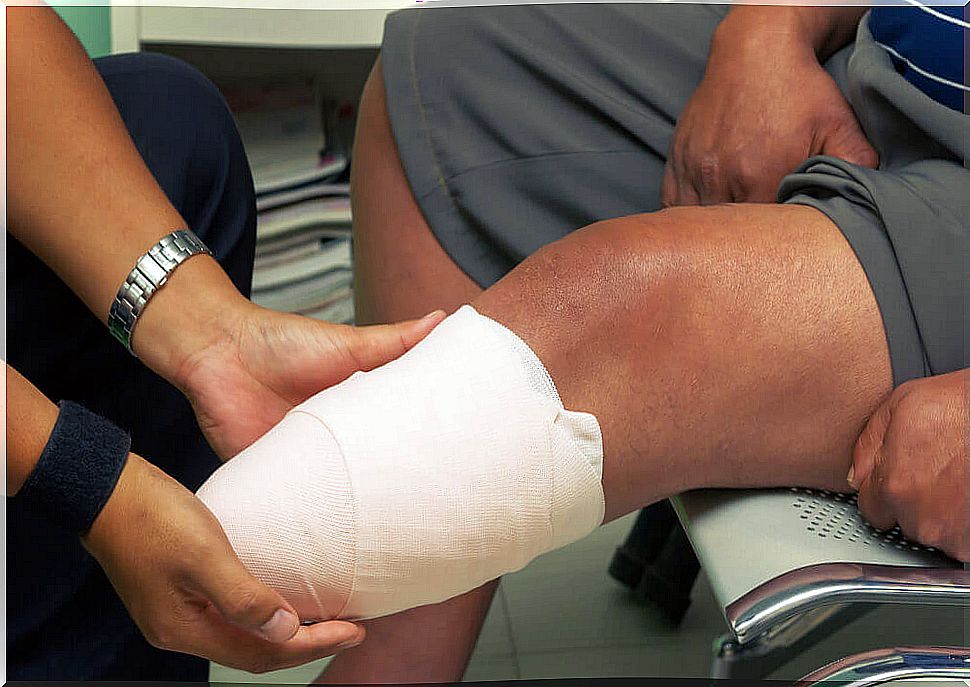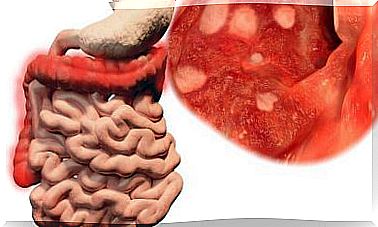Buerger’s Disease: Causes, Symptoms And Treatments
Buerger’s disease is a rare disease that is also called obliterative thromboangiitis . It consists of the inflammation of certain blood vessels, such as arteries and veins of medium and small caliber.
In the vast majority of cases it is associated with smoking. Its direct cause is not very well known, but it has been seen to be more frequent in certain geographic areas. For example, in Mediterranean or Southeast Asian countries.
The problem is that Buerger’s disease can have very serious consequences. One of them is that it is necessary to amputate a limb. Therefore, in this article we explain everything you need to know about it and how to avoid it.
What is Buerger’s disease?
Buerger’s disease is a pathology that affects the blood vessels. It is also called obliterative thromboangiitis . This is because it causes inflammation of the blood vessels, which become clogged due to the presence of thrombi.
According to a study published in Actas Dermo-Sifiliográfica, most of those affected are young men who smoke. It seems to be produced by an autoimmune mechanism that is triggered by the action of tobacco.
Although it is a rare disease, it has been seen that most of the cases occur in Mediterranean and Asian countries. What happens is that, when the blood vessels become blocked, the tissues stop receiving oxygenated blood.
Therefore, they end up being damaged and necrosis occurs. The most affected parts are usually the hands and feet. However, as the disease progresses this can spread to the arms and legs. Tissue death is associated with a very high risk of amputation.
What are the symptoms?
The symptoms that appear in Buerger’s disease derive from the involvement of the blood vessels. When both veins and arteries of medium and small caliber are damaged, it is usual for the first manifestations to appear in the extremities.
As explained by specialists from the Mayo Clinic, one of the symptoms is claudication. It consists of pain in the feet, hands, arms or legs that appears when these extremities are used for a time. It usually disappears at rest. For example, it is common in twins when walking.
The lack of blood supply ends up causing damage to the skin. Ulcers or necrotic areas may appear. Nails can even atrophy.
Another typical manifestation is Raynaud’s phenomenon. It is a situation in which the fingers or toes turn pale, due to the interruption of blood flow after certain triggers. It can occur due to cold or stress. Also when smoking.
Many people feel tingling or numbness in their limbs. The most superficial veins suffer episodes of inflammation, which is called superficial thrombophlebitis .
Tobacco: the main cause

Buerger’s disease, as we have explained throughout the article, is associated with tobacco use. It can be produced both by smoking and chewing it. However, the exact cause is unknown. It seems to be a reaction of the immune system against tobacco itself.
A study carried out by the Spanish Academy of Dermatology and Venerology explains that, apparently, there may be a certain genetic predisposition. This would explain why only a small percentage of smokers develop the disease.
Furthermore, as it has been seen that its prevalence is higher in certain countries (Asia and the Mediterranean), this theory is also supported. Buerger’s disease is more common in people with the HLA-A9 haplotype.
Risk factor’s
The most important risk factor, therefore, is tobacco. It does not need to be smoked. In addition, the more quantity consumed, the greater the probability of suffering from this pathology.
Similarly, sex could play a role, as it is more common in men than women. However, this could be because, until relatively recently, men smoked more than women. Most cases are detected in young people, under 45 years of age.
Diagnosis of Buerger’s disease
According to a study published in Integral Medicine, the diagnosis of Buerger’s disease is clinical. When the aforementioned symptoms appear in a young patient, a smoker and without other risk factors, it is essential to begin to suspect.
It is also important to rule out other autoimmune diseases or that there is a specific cause of stroke. However, there are a number of tests that can help confirm the diagnosis. The blood test is basic. With it, some pathologies, such as scleroderma or bleeding disorders, can be ruled out.
Angiography is another very useful test. Allows you to check the status of veins and arteries that are suspected of being affected. The Allen test is a test by which the arterial blood flow in the hand is observed.
How is it treated?
As the exact cause of Buerger’s disease is not known, an ideal treatment for it has not been found either. The only thing that is known for sure is that it is essential to stop smoking.
In addition, anticoagulant treatments are often given. For example, aspirin, heparin, and acenocoumarol. These last two are indicated when there is a venous or arterial thrombosis.
Calcium antagonist drugs can also be helpful. On the other hand, some doctors recommend performing a sympathectomy. It is a surgery that consists of eliminating certain nerves of the sympathetic nervous system to avoid vasoconstriction.
However, when blood flow remains interrupted for a long time and tissues are damaged, amputation is valuable. It may affect a single finger or the entire hand or foot may need to be removed.

Possible complications of Buerger’s disease
One of the most serious complications of this disease, as we have just seen in the previous section, is the amputation of a limb. This is usually necessary when tissues in the hands or feet die and gangrene occurs.
Gangrene is when a tissue dies due to a lack of blood supply or a serious bacterial infection. Symptoms usually include a black or bluish discoloration of the skin, an unpleasant odor, and loss of sensation in that part.
Amputation is necessary because, if not done, the infection can spread to the rest of the body. Depending on which part has been amputated, that person’s functionality and independence will be impaired.
Buerger’s disease is almost always preventable
The truth is that the exact cause of this disease is not known. However, it is known that the main trigger is tobacco. Whether smoked or chewed, it is the biggest risk factor.
In addition, tobacco is harmful to many other aspects of health. It is related to a multitude of cancers, such as lung or lip. That is why it is essential to avoid smoking or to quit as soon as possible.
It is normal that, when you have been using tobacco for years, it is difficult to give it up. However, today there are many methods and ways to help you take this step. For example, medications and psychological therapies. Try to ask a doctor for assistance to do so.









